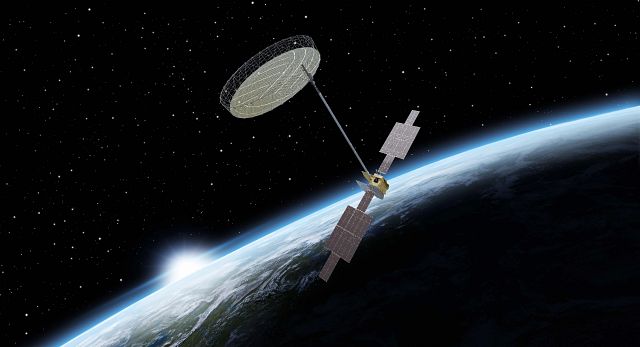AIX 2024: Viasat Outlines New Terminal Solution, Updates to Digital Ecosystem
Share

During the Aircraft Interiors Expo (AIX) in Hamburg last week, Viasat outlined an exciting new global in-flight connectivity (IFC) offering enabled by the development of a new terminal solution.
At AIX, Viasat’s Regional Vice President Neale Faulkner explained, “When we brought Viasat and Inmarsat together a year ago they were two different networks, so the number one task we had was to create a terminal that works across both of them.
“That involved introducing a new part of the terminal, which is the Dual Modem MODMAN [including a Viasat-designed Software Defined Radio] that can seamlessly switch between any of the network assets. That’s going to give airlines the benefit of access to our huge amount of satellites,” he continued.
To be specific, the terminal will allow airlines to connect to Viasat’s global Ka-band GEO satellites as well as its NGSO network consisting of Viasat, Inmarsat and partner Ka-band satellites.
The terminal solution will combine with the already proven GM-40 antenna, Viasat’s recently upgraded cabin network with 802.11 Wifi 6e axWAPs, and an Application Server with a 5G cell modem.
“There’s no change in antenna hardware needed, which gives us the ability to look at the 3600 aircraft that we already have connected [across over 60 airlines] and easily get them upgraded,” Faulkner added.
“We’ve really evolved our advertising and sponsorship offering and we’re seeing a huge uptake of airlines using that service to monetize and make sure that they’re getting something back from their IFC,”
Neale Faulkner, Viasat
He confirmed, “It’s being developed right now. We know what it’s going to look like and how it’s going to be formalized, and we’re hoping to start cutting it into airlines in late 2025, early 2026.” Viasat plans to provide more details in the coming months.
Elsewhere at AIX, Viasat’s stand was emblazoned with the tagline “Aviation’s most frequent flyer,” with Faulkner saying the company is keen to focus on its history and its credibility in the sector in terms of its ability to deliver, likely in the face of growing traction among disruptors like Starlink.
He outlined the exciting milestones coming down the pipe for the company in the next few months, including the launch of its GX10A and GX10B satellites dedicated to the Arctic region, which will enter service in 2025 and “as highly elliptical satellites, will add a whole new concept to [Viasat’s] offering.” He also pointed to the future launches of the Viasat-3 constellation’s F2 and F3 satellites: “We’re constantly adding more layers and capacity to what we already have.”
Finally, Faulkner spent time exploring how Viasat has been building its digital ecosystem to offer airline customers a turnkey experience in terms of how they utilize their IFC. “We’ve really evolved our advertising and sponsorship offering and we’re seeing a huge uptake of airlines using that service to monetize and make sure that they’re getting something back from their IFC,” he claimed.
Viasat offers real-time, targeted access to airline passengers on their own devices targeted based on location, route, airline and events. “We’re already serving about 10 million high value impressions a month to 238 destinations,” Faulkner said.
“We’re also still having huge success with Live TV and we’re looking at evolving that product to not be so linear. Instead, we’re thinking about how we can really give a TV experience to a passenger who is more accustomed to accessing different streaming services, whether that’s through iPads or through the seatback. So that’s a key focus for our product development teams that you’ll hear more about in the future as well.”
Click here to read about Viasat’s work with JetBlue, as discussed during a panel at SXSW 2024.


